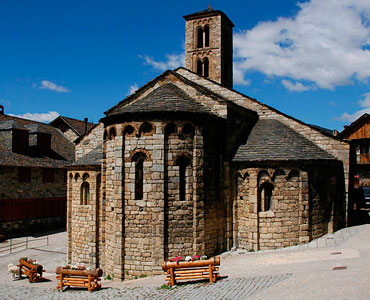
On November 30, 2000, UNESCO declared the Romanesque churches of the Boí Valley (l'Alta Ribagorça) a World Heritage Site, made up of nine monumental churches of the Pyrenees of Lleida.
The Centre d'interpretació del Romànic (Centre for Interpreting the Romanesque Art) is the entity responsible for managing the group of Romanesque buildings in the Vall de Boí (Alta Ribagorça - Spain); eight churches and a hermitage, that have been declared a UNESCO World Heritage Site. The main functions of the centre are to open the churches to the public, provide a guided tour service, promote the group of monuments and attend to people visiting the site.
For those who are interested in discovering all of the secrets of the Romanesque monuments of the Vall de Boí, the Centre d'Interpretació can also arrange guided tours. Its guides are specialists at interpreting heritage buildings and will help visitors to enjoy the best possible visit to this truly unique set of Romanesque style buildings. Guided tours are available in four languages: Catalan, Spanish, English and French.
For information and bookings:
http://www.centreromanic.com


















